2010 Tesla Roadster Sport - Click above for high-res image gallery
After finally getting myself situated in the back of the Boeing, I notice the lady to my left wearing a Tesla fleece. As fate, the alignment of the stars and unbridled dumb luck would have it, I was seated next to Rachel Conrad, Tesla's Senior Manager of Communications... for the next 10 hours.
After exchanging pleasantries, discussing each other's plans for the Frankfurt Motor Show and getting acquainted, the topic of conversation naturally turned to cars, and the Tesla Roadster, in particular.
"It's not just about performance," an overly animated Conrad told me. "What journalists don't understand is how functional it is. Owners forget to clean their windshield because they never have to go to the gas station!"
Okay, sure. But if you're selling a vehicle that starts at $109,000, you're interested in more than avoiding dirty hands at the pump. You want the full sports car monty. Power, poise, engagement, the lot. And a bit of green cred to boot surely doesn't hurt.
So after several hours of discussion, I finally say, "Hand it over to us for a week. We'll give it a proper review on its day-to-day livability. No track tests. No slalom speeds. No smoky burnouts. Just a comprehensive assessment of functionality."
A handful of phone calls and dozens of emails later, I arrive at Tesla's flagship dealership in Menlo Park, CA to pick up a full-kitted 2010 Tesla Roadster Sport. After a tutorial on the charging procedure, the internal computer and signing my life away, I was off. The Roadster was mine for the next five days, so I promptly pulled off into a bus stop, set a destination for the coast, disabled the traction control and laid a set of elevens down the street from the dealership.
Ladies and gentlemen, it pays to fly coach.
Follow the jump to keep reading...
Photos by Brad Wood / Copyright ©2010 Weblogs, Inc.
Trip One – Fully Charged – Range: 187 miles
The plan for the first day was to mimic a typical weekend jaunt – a two-seat sports car's raison d'être – involving lunch on the coast, a stop in San Francisco and then a run to my flat in Fremont before heading to a house in Tracy where I'd be parking and charging the Tesla for the week (no garage means no 220-watt outlet).
Total trip: 135 miles.
After fiddling with the JVC-supplied navigation system, the first stop was Sam's Chowder Shack north of Half Moon Bay. The initial leg was a simple 25-mile combination of surface streets, freeways and backroads terminating at Highway 1 and providing the perfect opportunity to get acquainted with the Roadster's recently revised interior.
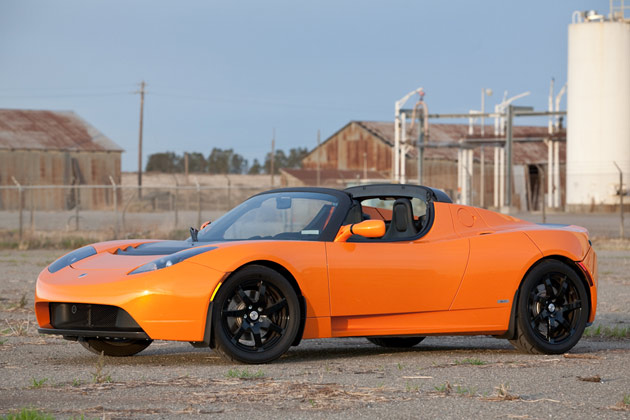
When Franz von Holzhausen left Mazda to join the Tesla team, one of his first orders of business was to give the inside of the Roadster a makeover. He's succeeded with an interior that finally looks like a finished product (including a glovebox!), striking a balance between sparse and upscale with carbon fiber trim and leather "Executive" appointments.
Unlike the prototype we drove two years ago, the two-stage transmission lever has been replaced by an aluminum center console with backlit buttons for Park, Reverse, Neutral and Drive. Just below is a slot for an iPod, with Apple's proprietary connector protruding from the bottom and a rubber backing to prevent the MP3 player from sliding around – a nice, functional touch.
Below that, the traction control switch is simply either on or off (huzzah!) and the two-stage seat heaters proved invaluable when we finally made it to a chilly, fog-ensconced coast.
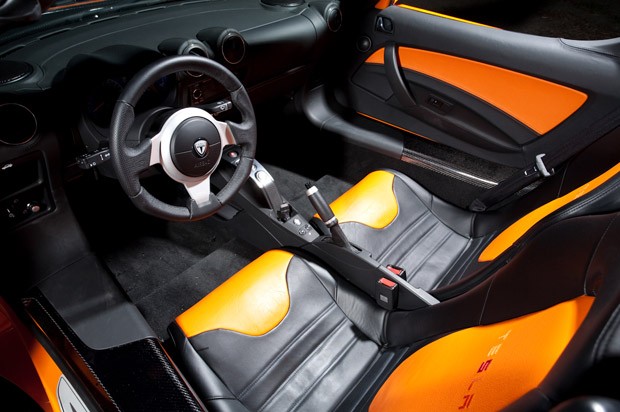
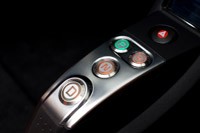
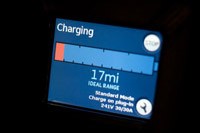
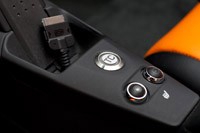
Although the JVC stereo looks as out of place as any other aftermarket head-unit, it just works (however inelegantly) and doesn't detract from the incredibly cool display that's migrated from its previous position to the left of the driver's knee to above the center console. The screen displays every facet of information about the Roadster, from ideal to operating range, charge status, maintenance information and performance stats. It's both simple to operate and pure geeketry, but the majority of the time it was kept on the battery display.
After enjoying some of Sam's finest (New England-style, natch) and performing an effortless five-car pass on PCH, I headed north in search of a peculiar San Francisco treat. No, not Uncle Ben's, but the
Scoring a spot down the street from the low-frequency radio station/coffee house, I enjoyed the oddly satisfying (and predictably stomach burbling) concoction before setting out on the second-to-last leg. I got back to the topless Tesla to find a pair of ten-year-olds peering over the windows and leaning on the front bumper as their mother took a few hundred cameraphone snaps of the kiddies. Yes, the "Very Orange" exterior is just that and perhaps a tad too extroverted for a vehicle that makes nearly no noise. I slotted the key into column, twisted, heard the reassuring chime and pulled away in near silence to both kids' amusement and apparent confusion.
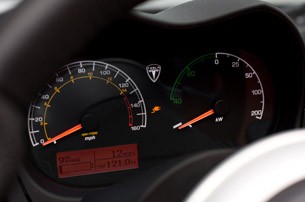
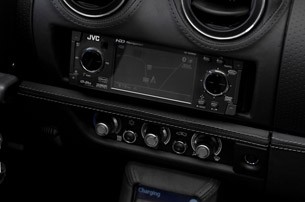
With just over 100 miles left on the charge, I quietly trundled my way around The City to find a few streets I knew would test the Tesla's suspension. It didn't take long to land on a particularly neglected one-way road that sent jolts through the steering wheel and ten-way adjustable suspension. Having driven a handful of Lotus Elise and Exiges in similar conditions, unsurprisingly, the Tesla felt nearly the same – easily livable, yet slightly jarring, complete with a few squeaks and rattles from the interior when cold.
When I finally made it to the Bay Bridge, the battery indicator provided a bit of a shock (no pun, promise). I had 92 miles left on the charge and 86 miles to cover, including a bout through the Bay Area's notorious late afternoon traffic. The first pangs of range anxiety had finally set in.
By the time I made it to Fremont after enduring some start-and-stop traffic on 880, the charge was down to 52 miles. The trip to Tracy: a Google-estimated 43.6 miles. Close, but doable.
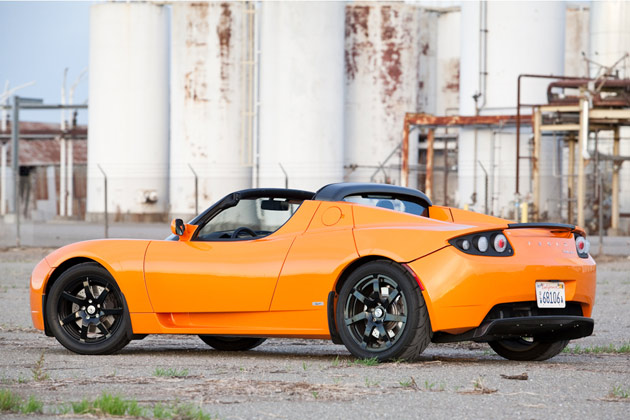
Packed up – including a 70-pound dog in the passenger seat – we headed out and I stupidly didn't fit the canvas roof buried in the trunk. As the sun went down, the temperature dropped in conjunction with the range, the battery readout changed from green to red, and a light on the dash indicating power was reduced.
In an effort to conserve the remaining juice (15 miles by the time I reached Altamont Pass), I shut off the seat warmers and heater, threw a beanie on and apologized to the dog. With visions of the puppy and I shivering on the side of the freeway awaiting a tow, I shifted into maximum conservation mode and 20 minutes later – with three miles left on the charge – we rolled into the garage, hooked up the three-prong, 220-watt cable to the dryer outlet, inserted the other end into the Roadster and with a twist and a snap the surrounding bezel glowed green, then blue, to indicate juice was flowing. The dog scowled in my general direction and then promptly passed out in front of the space heater.
Trips Two and Two-Point-Five – Fully Charged – Range: 185 miles
Despite Tesla's initial claim of a 250-mile charge on the battery, the upstart automaker has changed its tune to "over 200 miles." So why haven't we broken the that mark after a full six-hour charge? According to one of Tesla's engineers, our Sport model – like all press fleet vehicles – has lived a rough life over the last year and it's taken its toll on the battery. Your mileage – literally – will vary, but we've been told repeatedly that the average owner routinely sees in excess of 200 miles per charge. Oh, and if you're without a 220-watt outlet, Tesla supplies a normal 110-watt cable that works on any standard three-prong outlet. However, despite what simple math might indicate (half of 220 means a 12-hour charge?), the 110-watt cable can only transfer five miles for each hour of charging time. Translation: Over 40 hours to top off on a normal wall outlet. Disconcerting, but hardly a dealbreaker for Teslaphiles.
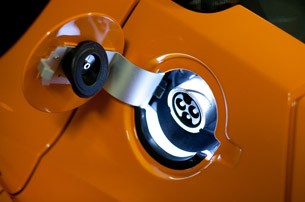
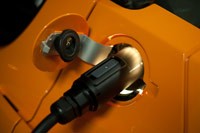
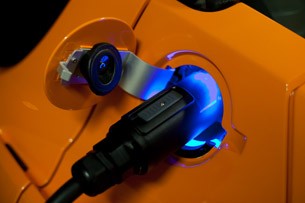
So after one sphincter-puckering test of the Tesla's range, the next two days were taken relatively easy. Most of the trips were composed of short jaunts around town – anywhere between five and 30 miles – along with a 104-mile round-trip to Oakland and a photo session on the outskirts of the city. As you'd expect, this is where the Tesla shines. Simply head out, do what needs doing and plug in when you get back. It's an easy set-it-and-forget-it affair, and while it's not on the feature list, a trip to Home Depot for 50-feet of plastic fencing and two dozen wooden stakes fits in the trunk... and the front seat... with your Mom holding them.
Trip Three – 90% Charged – Range: 176 miles
With daily livability off the checklist, the final night with the Roadster meant that a proper flogging was in order. After the aforementioned trip to Oakland, I set the Sport to charge for a few hours and then headed out on a late-night backroad bombing through the hills that separate the Valley from the (far) East Bay. After all, this is a sports car, and according to Tesla's Conrad, the ideal Roadster owner is someone who's just fitted solar panels to their roof and is about to trade in their Porsche 911 Turbo. So then...
The sub-40-mile roundabout run through the Altamont is the macadam playground of my youth, a combination of expansive straights and tight turns that still serves as my de facto test loop to this day. And one stretch, in particular, is strikingly apropos: Tesla Road.
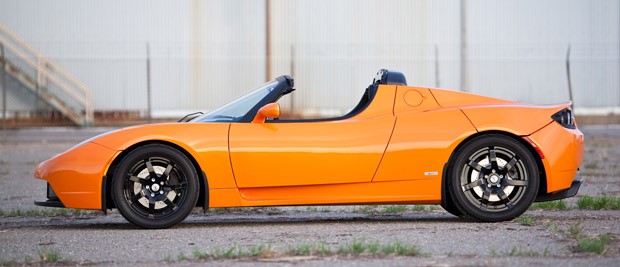
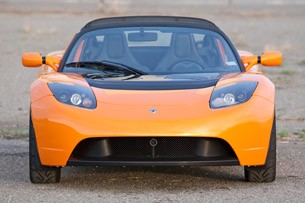
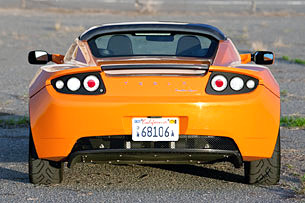
By fiddling with the car's firmware, fitting a more efficient motor and hand-wound stator, the revised Roadster puts out 288 horsepower and 295 pound-feet of torque, the latter – and this can't be repeated enough – available at zero rpm. The tweaks drops two-tenths of a second from the standard Roadster's 0-60 time (3.7 versus 3.9 seconds), but the initial acceleration isn't what impresses the most. Passing isn't point-and-squirt, it's teleportation. Need to squeeze into the slot between the Cadillac Escalade and the (in comparison, low-tech) Toyota Prius? Before you can think it, you're there. Mid-range torque is so plentiful that when it finally begins to drop off a few ticks past 5,000 rpm, it doesn't matter. You're already where you need to be, hunting for another slot in traffic as the whir from the electric motor at your waist is quickly overcome by a combination of wind and road noise.
With the computer set to Performance (not the Max Range mode I'd used thus far), I was completely convinced of the Roadster's pavement pummeling chops. Although you're always acutely aware of the amount of weight behind your back (the battery comes in around 900 pounds and is mounted directly against the firewall), it strikes a balance between the rearward grip of a 911 and the edgy tactility of a mid-engine sports car.
While trundling around town, the regenerative brakes takes some getting used to, but once acclimated, they became one of my favorite features, providing a startling amount of "engine braking" without having to employ the AP Racing stoppers. Out of town and into the twisties, the system's abilities are magnified to good effect and the brakes, like the sublime unassisted steering, remain wonderfully pure to their Lotus roots.
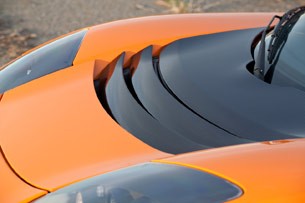
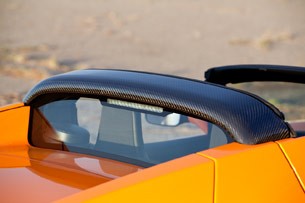
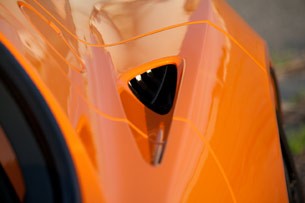
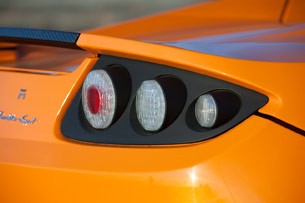
Halfway up the mountain, the radius of the bends decreases in opposite proportion to the drop-offs, but despite a predilection for bacon-saving, I disable the traction control and things get even more interesting. For your average hack (yours truly), understeer at the limit is the order of the day, but with a little coaxing and a drop of the throttle (throttle?) the rear skips sideways as the front end aims for the apex.
A sweeping left-right-left-right combination at the top of the hill makes the Roadster's rear weight bias even more pronounced, but easily manageable. And then I notice an amber light on the dash. "Fault." Followed by the "Power Reduced" indicator.
The power gauge on the right won't swing passed 100 kW as I pull off at the next turnout to give it rest. After scribbling a few thoughts in my notebook and restarting the Roadster, all is back to normal – for another five miles. The same combination of "Fault" and "Power Reduced" appears on the dash and repeats two more times before I finally pull into the lot that marks the end of my run. Needless to say, I'm disappointed, yet after speaking with the crew at Tesla, they assure me that it was a momentary issue with the motor and a rare occurrence. Chalk it up to a well-worn tester. Regardless, it was a disheartening end to an otherwise spectacular experience, and when I finally return to the garage, the late-night assault proves that just like a traditional sports car with an internal combustion engine, fuel efficiency is scarified at the altar of speed. When I left, the display read 176 miles. When I plugged in: 63 miles. Actual miles traveled: 28.
Trip Four – Fully Charged – Range 184 miles
The trek back to Tesla was an easy 63-mile jaunt; the final test of its livability and prime reflection time. Just like the vehicle on which it's based, the Roadster Sport is an exercise in compromise. The interior is sparse, the cargo capacity minimal, at best. But as a means of daily transportation, with the – let's face it – rare stoplight drag and odd day-long journey, the Roadster is easily on par with similarly priced performance offerings. And even with my singular bout of range anxiety, the appeal continued to grow.
As a longtime Elise-lover, I could count down the days when the depreciation demons take their toll and the Tesla Roadster finds its way into the Lavrinc stable, but how long could that take? The short answer: A while.
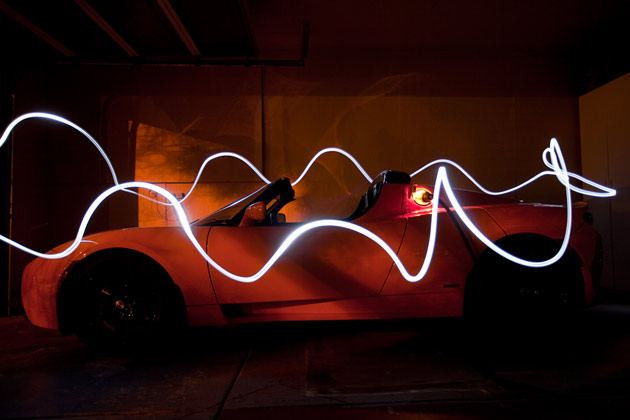
Tack on the Sport package and you're looking at an additional $19,500 on top of the $109,000 base price. Add the carbon fiber exterior bits (totaling $14,000?!), premium paint, electronics package and Executive interior and the as-tested price swells to $155,850. Clearly, Tesla is taking cues from the Germans. But to simply crunch the numbers and calculate the payments is to completely miss the point.
The Roadster is a rolling proclamation that defines you as a futurist. It's not a toy, it's a geek's plaything. It's not a track tool, but it's capable of unparalleled performance. The same could be said for a countless number of past, current and future exotics. And above all else, it works, something that can't be said for many erstwhile supercar upstarts. Factor in the (near) zero-emissions thing and the total tally for juice (around $40.00 for the week, maybe less if I was on a different power plan) and the Roadster rises above the hype to solidify its place as a proper sports car. Could it be lighter? Certainly. Could it be cheaper? Most definitely. But today, in this world, in this climate, it stands in a segment of one. That makes it something to aspire to. And aspire I will.
Photos by Brad Wood / Copyright ©2010 Weblogs, Inc.
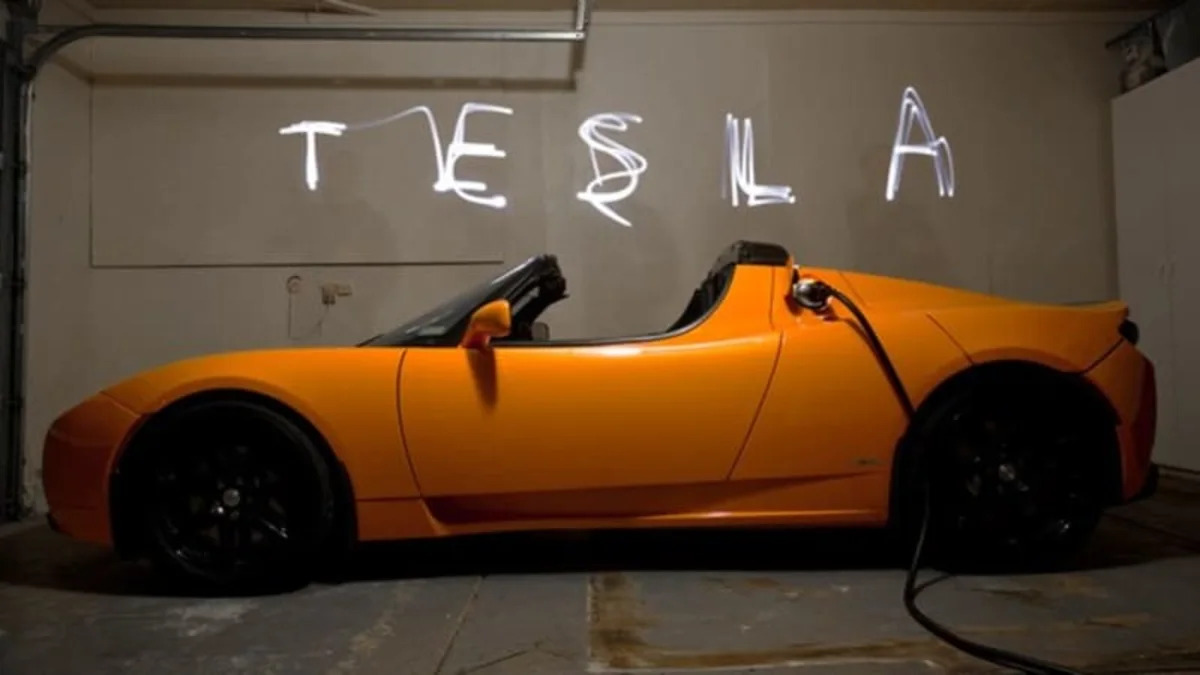
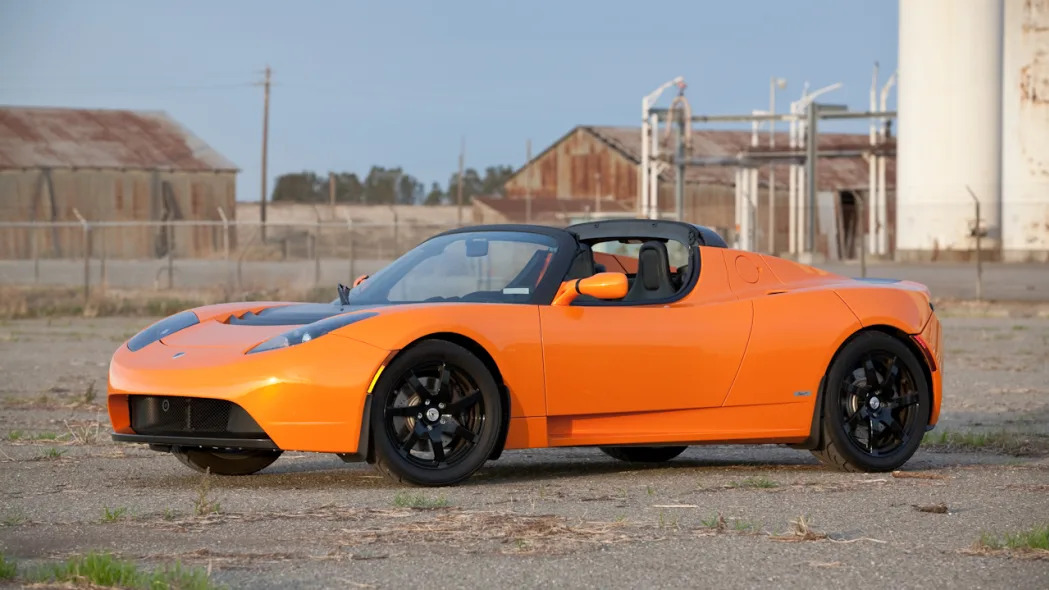

Sign in to post
Please sign in to leave a comment.
Continue